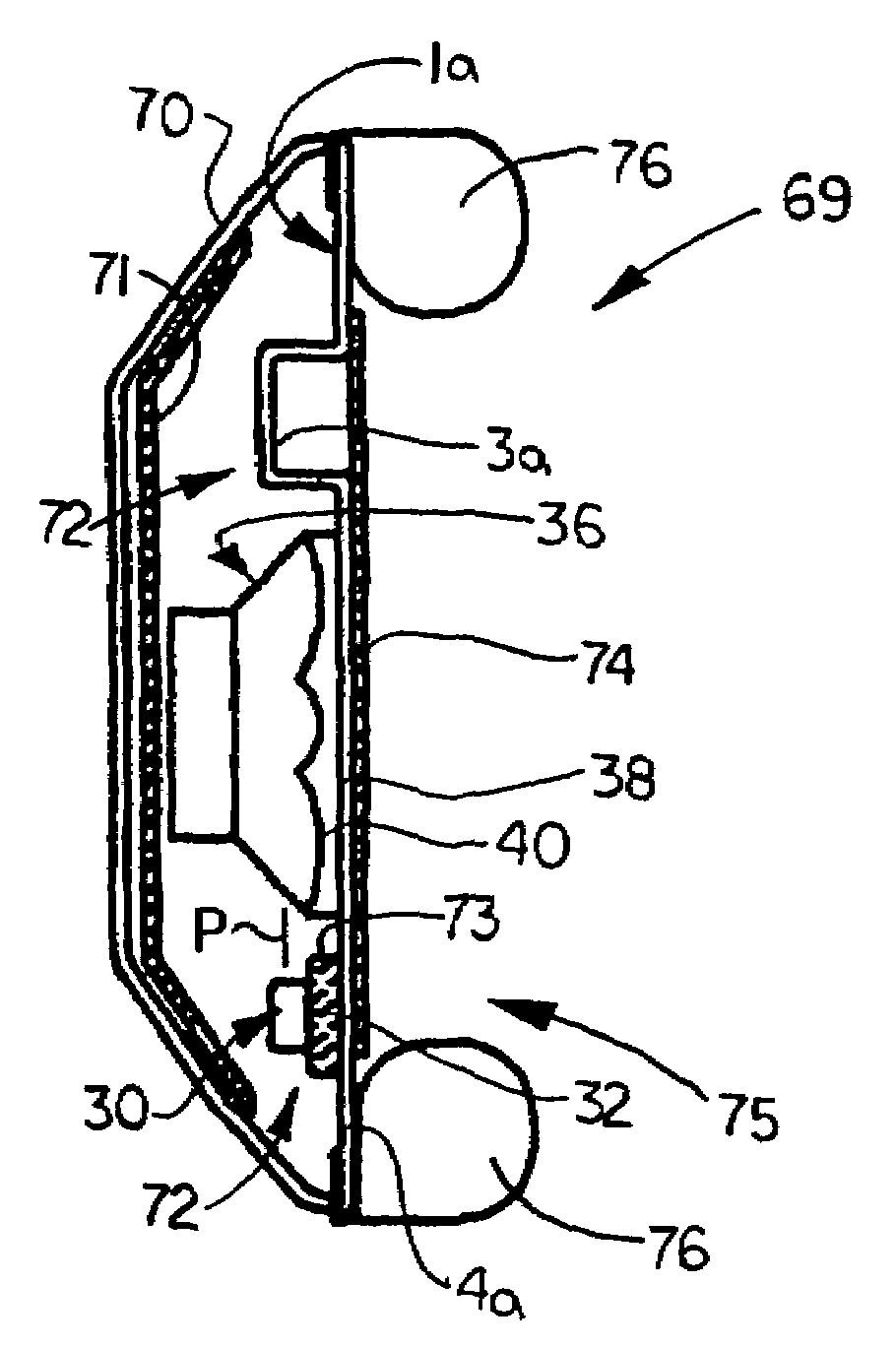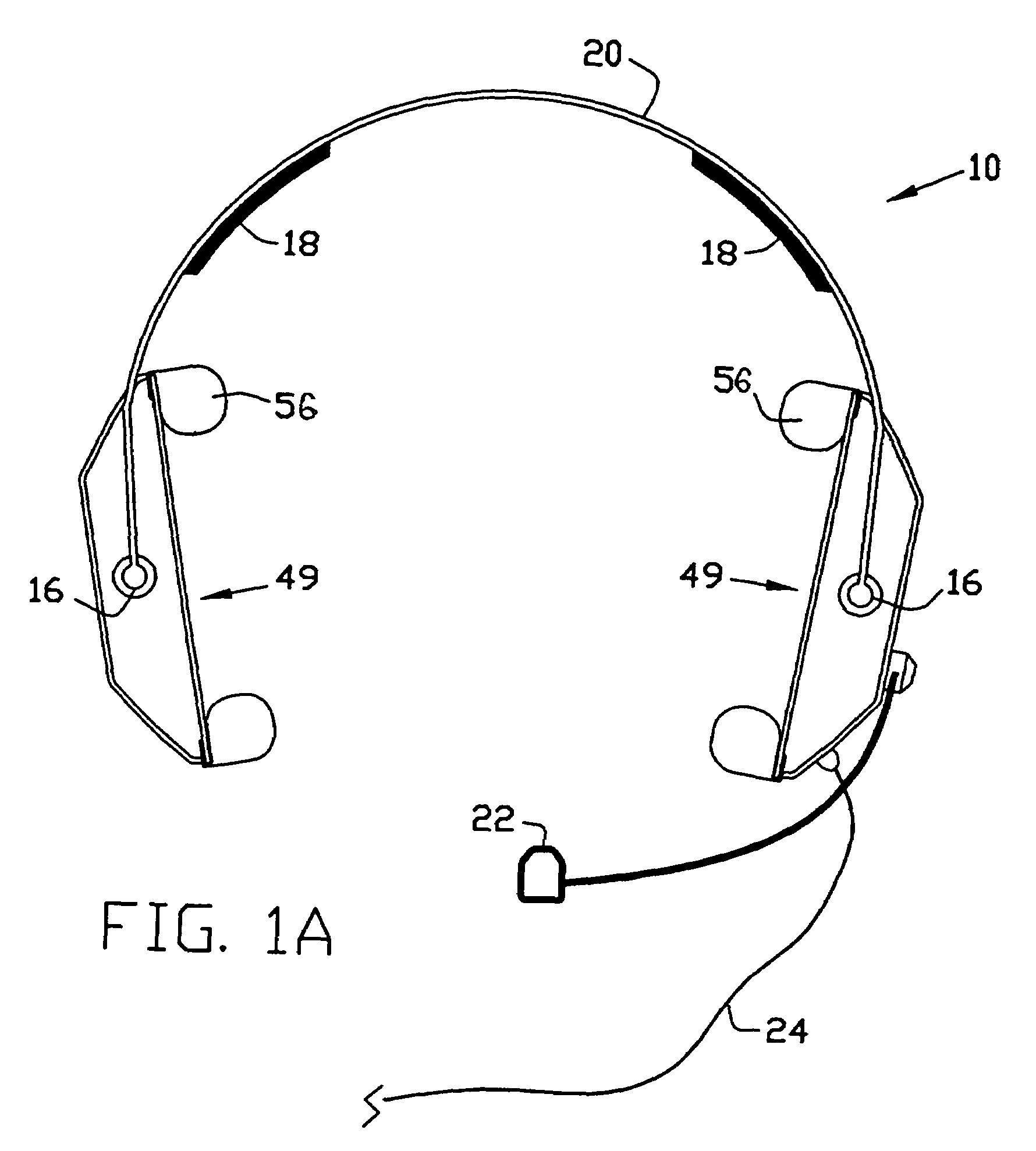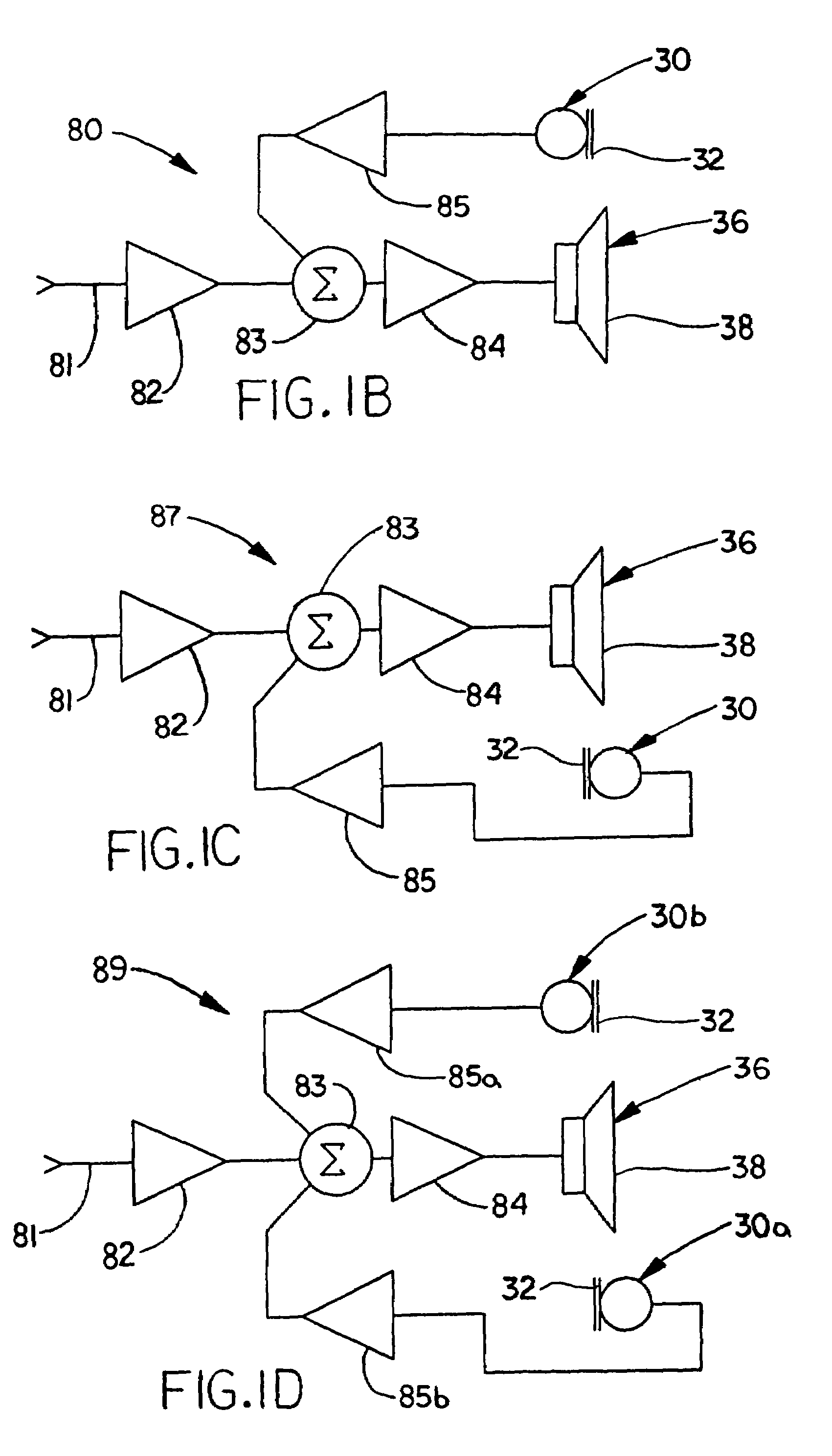Electroacoustic devices with noise-reducing capability
a technology of electroacoustic devices and noise reduction, applied in the direction of active noise control, instruments, electrical transducers, etc., can solve the problems of phase shift between the original signal and the attenuated signal, the combination of active noise attenuation and passive noise attenuation, frequency response and phase response, etc., to minimize the adverse noise reduction effect and minimize direct sound reflection
- Summary
- Abstract
- Description
- Claims
- Application Information
AI Technical Summary
Benefits of technology
Problems solved by technology
Method used
Image
Examples
first embodiment
[0045]An illustrative embodiment of an electroacoustic device of the present invention is generally indicated by reference numeral 10 in FIG. 1A and includes a pair of transducer assemblies 49 connected to a pair of attachment points 16 of an adjustable headband 20, optionally including a pad 18. A boom microphone 22 may also be attached to a transducer assembly 49 or to the adjustable headband 20. One end of a cable 24 may be connected to the respective transducer assemblies 49, in which case the opposite end of the cable 24 is adapted for connection to an external device or devices (not shown). Alternatively, the transducer assemblies 49 may have internal electronic circuitry. While the electroacoustic device 10 in FIG. 1A and throughout the drawings is shown in the configuration of a headset, it will be understood that the present invention is equally adaptable to use as a telephone handset, a helmet or other electroacoustic device. Furthermore, the electroacoustic device 10 can ...
second embodiment
[0058]Referring next to FIG. 7A, in a second embodiment each transducer assembly 69 includes a generally concave housing 70 and a piece of outer acoustic foam 71 typically provided on the interior surface of the housing 70. A parallel cavity flat baffle plate 1a, heretofore described with respect to FIG. 5A, is mounted to the housing 70 to define an outer cavity 72 between the housing 70 and the rear surface of the parallel cavity flat baffle plate 1a, with the outer acoustic foam 71 provided in the outer cavity 72. A speaker 36 is typically mounted to the rear surface of the baffle plate 1a, with the front 38 of the speaker 36 disposed in communication with the speaker opening 2a (FIG. 5A) in the baffle plate 1a. A piece of microphone acoustic foam 73 is typically provided on the rear surface of the rim 4a of the baffle plate 1a, inside the outer cavity 72. The face 32 of a microphone 30 mounted to the baffle plate 1a faces the microphone acoustic foam 73. The diaphragm 34 (FIG. 2)...
third embodiment
[0060]Referring next to FIG. 8A, in a third embodiment each transducer assembly 119 includes a generally concave housing 120 which includes a housing extension 120a in the upper portion thereof to facilitate positioning of the interior transducer assembly components away from the ear 127a of a wearer. A piece of outer acoustic foam 121 is typically provided on the interior surface of the housing 120. A parallel cavity slant baffle plate 1c is mounted to the housing 120. An outer cavity 122 is defined between the housing 120 and the rear surface of the baffle plate 1c, with the outer acoustic foam 121 provided in the outer cavity 122. A speaker 36 is typically mounted to the rear surface of the baffle plate 1c, with the front 38 of the speaker 36 disposed in communication with the speaker opening 2c (FIG. 5C) in the baffle plate 1c. A generally flat piece of microphone acoustic foam 123a is provided in the microphone recess 3c of the baffle plate 1c. The face 32 of a first microphone...
PUM
 Login to View More
Login to View More Abstract
Description
Claims
Application Information
 Login to View More
Login to View More - R&D
- Intellectual Property
- Life Sciences
- Materials
- Tech Scout
- Unparalleled Data Quality
- Higher Quality Content
- 60% Fewer Hallucinations
Browse by: Latest US Patents, China's latest patents, Technical Efficacy Thesaurus, Application Domain, Technology Topic, Popular Technical Reports.
© 2025 PatSnap. All rights reserved.Legal|Privacy policy|Modern Slavery Act Transparency Statement|Sitemap|About US| Contact US: help@patsnap.com



